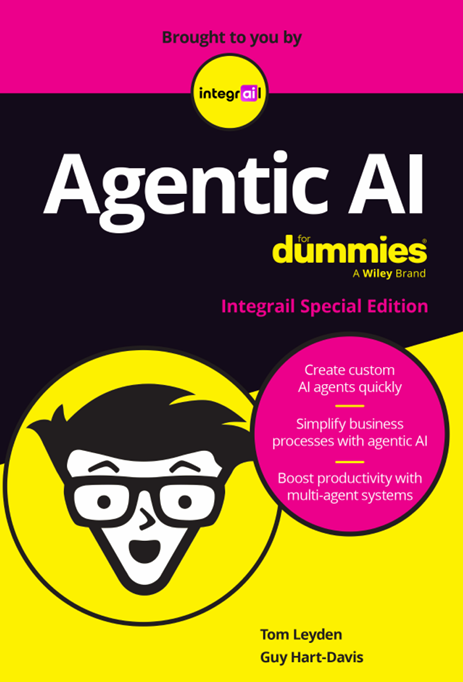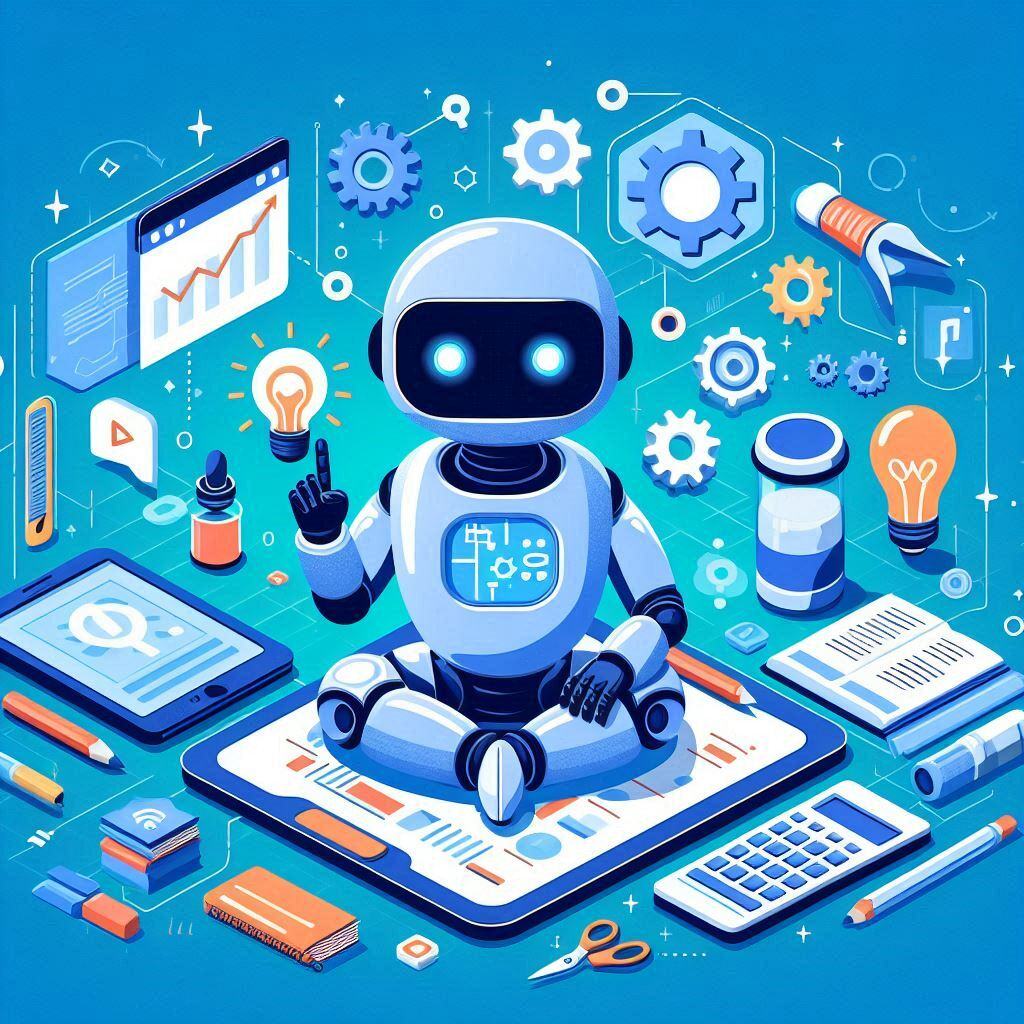Mapping Node: Automate Lists & Scale AI Workflows Easily
AI tools are transforming how businesses and individuals manage information. At Integrail, we are committed to making these tools accessible and...
Discover what no code means and how it empowers anyone to build applications without coding. Explore its benefits and use cases.
The no-code movement is reshaping the software development landscape, enabling anyone to build software applications without traditional coding skills. This approach has democratized the process, allowing entrepreneurs, businesses, and individuals to create powerful tools quickly and efficiently. But what exactly does “no code” mean, and why is it gaining so much traction? This guide will explain the concept, benefits, and future of no-code platforms, and how they are changing the way we think about building software.
“No code” refers to a development approach that allows users to create software, applications, and workflows without writing code. Through intuitive, visual interfaces and pre-built components, users can design and deploy applications without needing to understand programming languages like JavaScript, Python, or HTML.
No-code platforms provide tools that simplify the process of application development, using drag-and-drop functionality and visual builders. This approach allows users to focus on the "what" of their projects instead of getting bogged down by the "how." Whether it's automating business processes, building internal tools, or creating customer-facing applications, no-code makes development accessible to a broader audience.
No-code platforms leverage visual development environments that make software creation intuitive and user-friendly. Here’s a breakdown of how these platforms typically work:
Visual Development: Users build applications using a visual interface where components can be added, arranged, and customized without writing code. This environment allows for real-time feedback, enabling users to see their changes instantly.
Drag-and-Drop Builders: Instead of coding functionalities from scratch, no-code platforms provide pre-built elements that can be easily dragged and dropped into the application. These elements include form fields, buttons, data tables, and AI-driven components that perform specific tasks.
Built-In Integrations: Many no-code platforms support seamless integration with existing business tools, such as CRM systems, analytics platforms, and cloud services. These integrations help to enhance the functionality of applications without requiring complex coding.
Workflow Automation: No-code platforms often include automation capabilities, allowing users to create workflows that trigger actions based on specific conditions. This functionality helps streamline repetitive tasks and improve overall efficiency.
No-code development offers several advantages, making it an attractive choice for a wide range of users and industries:
Speed and Efficiency: Traditional coding projects can take months to complete. With no-code, applications can often be built in days, significantly accelerating the development cycle and time-to-market.
Cost Savings: By eliminating the need for specialized coding skills, no-code platforms reduce development costs. Businesses can create their own tools without hiring developers, making software development more affordable.
Empowers Non-Technical Users: No code breaks down barriers, allowing anyone—even those without a technical background—to participate in software creation. This democratization of development fosters innovation across all departments, from marketing to operations.
Flexibility and Iteration: Changes can be made quickly and easily within no-code platforms, allowing for rapid testing, feedback, and iteration. This agility helps businesses stay responsive to market demands and user needs.
Reduced IT Dependency: No-code platforms empower teams to create their own solutions without overburdening IT departments. This decentralization of development helps streamline internal processes and reduce bottlenecks.
No code is versatile, serving a wide array of purposes across different industries. Here are some common applications:
Internal Tools and Dashboards: Businesses can quickly create customized dashboards and internal tools to manage data, track performance, and streamline operations without relying on external software.
Customer-Facing Applications: From simple web forms to complex mobile apps, no-code platforms enable businesses to create customer-facing applications that enhance the user experience.
Business Process Automation: Automating routine tasks such as data entry, report generation, and customer follow-ups is made simple with no code, allowing businesses to focus on more strategic activities.
AI-Driven Solutions: No-code platforms are increasingly incorporating AI features, enabling users to build intelligent applications that can analyze data, make predictions, and automate decisions.
While no-code platforms offer numerous benefits, they are not without challenges. However, these challenges are often manageable and can be addressed with the right approach:
Complex Integrations: Connecting no-code applications to complex legacy systems or specialized tools can sometimes pose difficulties. Modern no-code platforms are continually enhancing their integration capabilities to overcome these hurdles, offering more built-in connectors and customization options.
Performance Optimization: Ensuring optimal performance as applications scale can be a challenge. Advanced no-code platforms provide tools for testing and optimization, allowing users to fine-tune their applications for speed and efficiency.
Data Security and Compliance: Handling sensitive data requires robust security measures. No-code platforms are increasingly prioritizing security features such as data encryption, access controls, and compliance with industry regulations, ensuring that applications are safe to use in any environment.
Scalability: As business needs grow, so does the demand on your applications. Leading no-code platforms are designed with scalability in mind, ensuring that your solutions can handle increased traffic and usage without a hitch.
The no-code movement is evolving rapidly, with advancements in AI and machine learning playing a significant role in its growth. The future of no-code will see platforms becoming even more powerful, enabling users to build applications with advanced capabilities and complex functionalities without writing a single line of code.
AI-Enhanced Development: AI-driven enhancements will continue to make no-code platforms more intelligent, assisting users in optimizing workflows, improving application performance, and automating complex processes.
Expanded Integrations: Expect no-code platforms to offer even broader integration options, allowing for deeper connections with third-party tools and services, further enhancing application functionality.
Increased Accessibility: As no-code platforms advance, they will continue to lower the barriers to software development, making it possible for anyone to turn their ideas into reality.
No code is more than a trend; it’s a transformative approach to software development that empowers users to create, innovate, and solve problems like never before. With no-code platforms, the power to build robust applications is placed directly in the hands of those who need it, making development faster, more cost-effective, and accessible to all.
Integrail is at the forefront of this no-code revolution, offering an intuitive platform that simplifies the development of intelligent AI applications. By combining visual design with powerful automation and integration capabilities, Integrail helps businesses and individuals build the tools they need to succeed in today’s digital landscape.
Ready to explore what no code can do for you? Discover more at Integrail.ai and start building smarter, faster, and without code.

AI tools are transforming how businesses and individuals manage information. At Integrail, we are committed to making these tools accessible and...

If you’re hearing about Agentic AI and wondering what all the fuss is about, you’re not alone. It sounds complex, but here’s the good news: it’s...

Artificial Intelligence (AI) is transforming industries by automating tasks, enhancing decision-making, and driving innovation. Traditionally,...
Start your journey with Integrail

Try AI Studio by Integrail FREE and start building AI applications without coding.

NEW White Paper: Discover how AI Studio accelerates your workflows